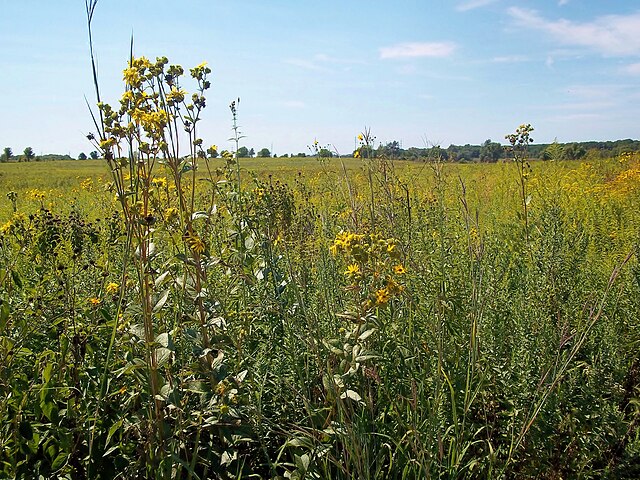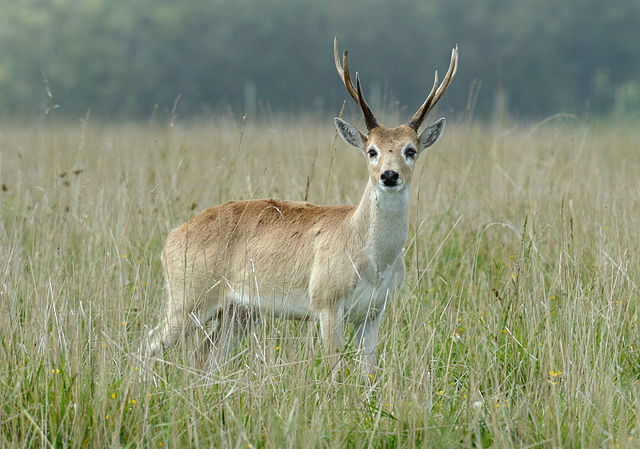Prairies are ecosystems considered part of the temperate grasslands, savannas, and shrublands biome by ecologists, based on similar temperate climates, moderate rainfall, and a composition of grasses, herbs, and shrubs, rather than trees, as the dominant vegetation type. Temperate grassland regions include the Pampas of Argentina, Brazil and Uruguay, and the steppe of Ukraine, Russia and Kazakhstan. Lands typically referred to as "prairie" tend to be in North America. The term encompasses the area referred to as the Interior Lowlands of Canada, the United States, and Mexico, which includes all of the Great Plains as well as the wetter, hillier land to the east.
Tallgrass prairie flora (Midewin National Tallgrass Prairie)
Prairie grasses
Wheatfield intersection in the Southern Saskatchewan prairies, Canada.
Prairie Homestead, Milepost 213 on I-29, South Dakota (May 2010)
The Pampas are fertile South American low grasslands that cover more than 1,200,000 square kilometres (460,000 sq mi) and include the Argentine provinces of Buenos Aires, La Pampa, Santa Fe, Entre Ríos, and Córdoba; all of Uruguay; and Brazil's southernmost state, Rio Grande do Sul. The vast plains are a natural region, interrupted only by the low Ventana and Tandil hills, near Bahía Blanca and Tandil (Argentina), with a height of 1,300 m (4,265 ft) and 500 m (1,640 ft), respectively.
Landscape in the Pampas at eye level. Brazil
Taim Ecological Station, in the southernmost of Rio Grande do Sul (near the Atlantic Ocean), Brazil, is an example of flat topography with wetlands.
Coxilhas (low hills covered by grasslands) in Morro Redondo, Rio Grande do Sul, Brazil
Pampas deer








